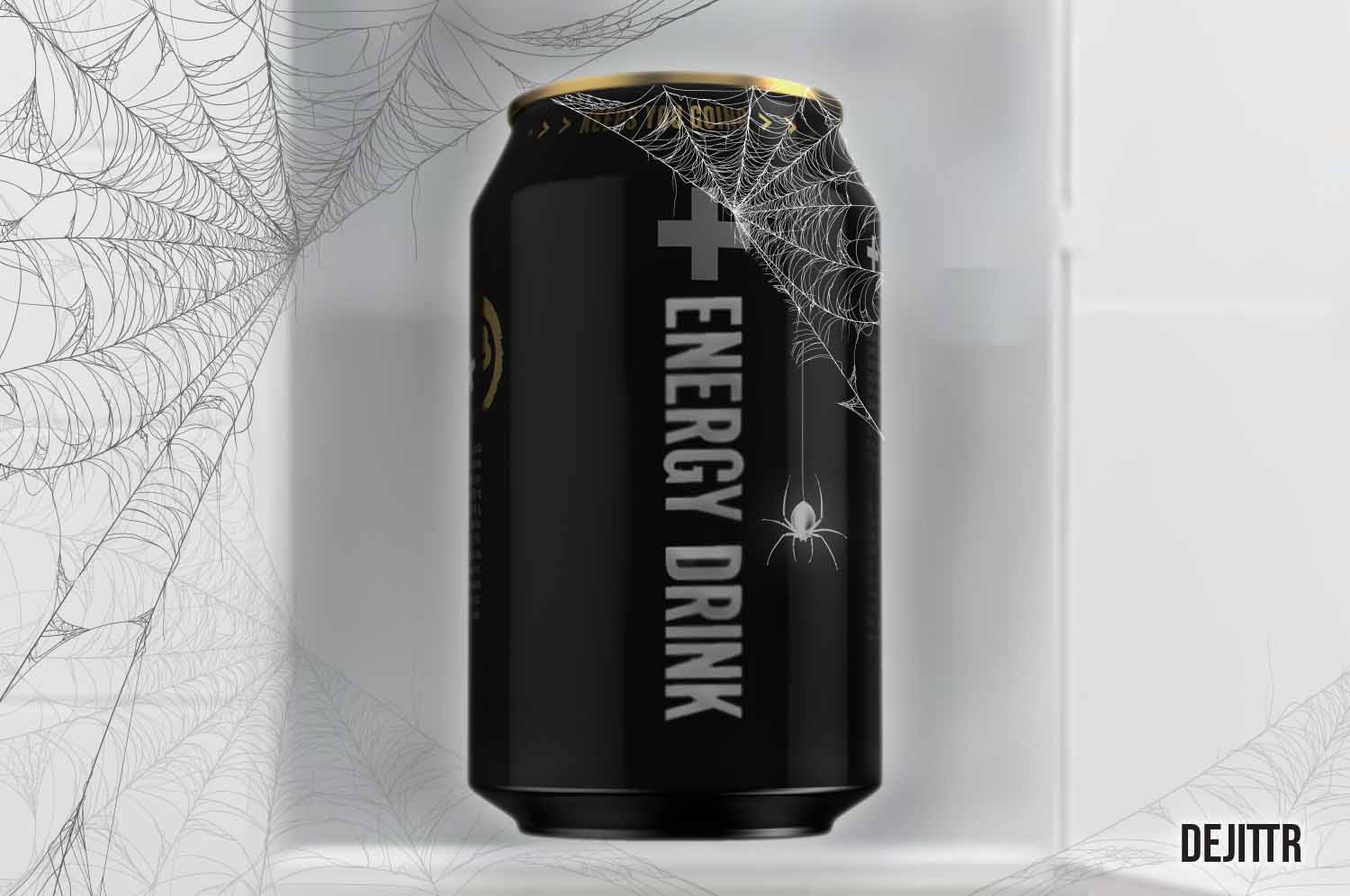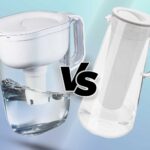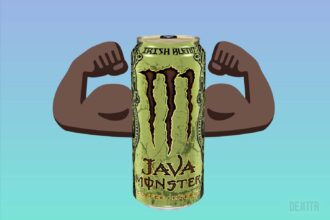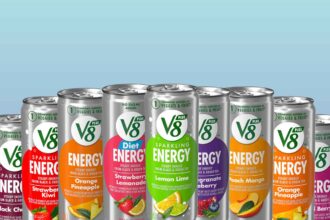Energy drinks are excellent at boosting your focus and improving your alertness. Athletes, gamers, and late-night assignment finishers all swear by them. But they’re more expensive than coffee, which can make you consider buying them in bulk, as long as expiration isn’t a factor.
Most energy drinks expire within two years of production as their preservatives lose potency, affecting their taste. Drinking expired energy drinks can lead to vomiting and nausea, but the expiry date listed on the can isn’t the actual date at which they go bad.
In this article, you will discover the true shelf life of different energy drinks like Monster Energy, Red Bull, and 5-Hour Energy. You will also learn what storage conditions extend the lifespan of an energy drink. Finally, you will discover how an unopened can expires at a different rate than an opened one.
But first, let’s explore the concept of energy drink shelf life.
Do Energy Drinks Expire?
Energy drinks expire, but the rate they do varies based on their storage:
- If an energy drink is stored poorly*, it expires around the ‘use by’ date on its packaging.
- If an energy drink is appropriately stored**, it is safe to consume 6 to 9 months past the expiry date, given that the individual cans are unopened.
*Poor storage = stored in a hot environment (above 80 degrees Fahrenheit)
**Proper storage = unopened, stored at room temperature, and kept out of sunlight
Energy shot (a.k.a 5-Hour Energy) expires around 5 months after the listed expiry date if stored at room temperature.
Rockstar can last up to 9 months after the expiry date if stored properly, but the beverage’s taste starts degrading within 3 months of technically expiring.
Monster Energy is also quite similar; it can be consumed up to 9 months after the date on the package. However, its taste starts to seriously degrade.
Red Bull is the most resilient among energy drinks as it maintains its usability up to 9 months after the ‘use by’ date and retains its taste for up to 6 months.
What Will Happen if I Drink an Expired Energy Drink?
The expiry date listed on the drink’s packaging assumes poor storage, untimely can opening, and taste-driven consumption, which means the definition of ‘expiry’ is that the beverage does not taste good.
And for that to happen exactly when listed on the bottle or the can of energy drink, it has to be stored in a hot environment.
Since this complicates what expiry means and when it happens, the following table will better convey what happens when you have an out-of-date energy drink.
| Storage Conditions | Period Past Expiration Date | Possible Effects |
| Unopened, room temperature | 6 months past expiry | No ill-effects (taste might seem off) |
| Unopened, room temperature | 10 months past expiry | Nausea, vomiting, dehydration |
| Opened, room temperature | 5 days past opening | Nausea |
| Opened, room temperature | 7 days past opening | Tastes bad, nausea |
| Opened, refrigerator | 7 days past opening | Less carbonation |
| Opened, refrigerator | 8 days past opening | Nausea, vomiting |
Shelf Life of Energy Drinks When Opened vs. Closed
The table in the previous section shows that the expiry timeline for opened and unopened energy drinks is different. Let’s look at how this shelf life varies.
If stored at room temperature, unopened energy drinks last 12 to 18 months from the production date (the producers usually set the expiry date at half of this period).
Opened energy drinks last up to 7 days in the fridge but lose their fizz within a few hours, affecting the beverage’s taste significantly. But if your definition of ‘expiry’ entails losing effectiveness, energy drinks never lose potency.
Whether opened or unopened, energy drinks don’t ever fail to wake you up no matter how long past their expiry date they are. However, once an energy drink is past its expiry date, there is no guarantee that it will not induce nausea or vomiting.
What to do if You Buy Energy Drinks in Bulk?
If you purchased a large pack of Red Bull and its expiry date is approaching, you must decide between two bad options:
- Having to drink more energy drinks than you need is a bad option
- And consuming energy drinks past their use-by date is a bad option
Pro Tip: The consequences of drinking too much energy drink are far worse than drinking a moderate amount after its expiry date.
Don’t force yourself to drink more than two energy drinks in a day, even if the expiry date is approaching. You can consume the rest within 6 months of the expiry date as long as you store the beverages at room temperature.
The kick you get out of these drinks will remain the same because caffeine does not expire. The other ingredients go bad, and preservatives are often used to keep these ingredients from going bad.
Preservatives in Energy Drinks That Make Them Last
Energy drinks have preserving agents that not only keep caffeine from reacting out of existence but can also keep outside agents from adversely impacting caffeine.
Did you know that the overall acidity level of some energy drinks is close to battery acid?! This leaves little room for bacteria and microbes to affect the drinks.
The citric acid (also found in lemons and oranges) alkalizes the beverage, so you don’t experience heartburn with every sip. Sodium citrate is also a contributor to this acidity balancing/regulation.
The preservative that keeps the flavoring agent in the beverage from going bad are:
- Sodium benzoate
- Potassium sorbate
- Sorbic acid
These substances keep the internal contents of an energy drink from going bad, but what about external influences?
When you open an energy drink can, it remains safe to consume for a few days in the fridge.
Why?
Because of benzoic acid.
Benzoic acid kills mold at its inception and can prevent bacteria from contaminating an energy drink.
Now that you know about the contents that preserve an energy drink, the question is, how does this help you? Knowing that active substances preserve energy drinks can help you see how storage temperature matters.
Energy Drinks and the Fridge
Traditional wisdom suggests that a refrigerator is the best defense against food getting spoiled, which applies to an opened can of an energy drink.
Bacteria and microbes don’t react as much at low temperatures, and an opened can is vulnerable to bacteria.
However, do not store unopened energy drink cans in the fridge long-term.
Firstly, unopened cans have no threat of contamination. Secondly, the preserving agents inside the can don’t operate optimally at low temperatures.
An unopened bottle or can of energy drink goes bad within 9 months of manufacturing if it is in the fridge. It also goes bad within 6 months if it is in direct sunlight.
Pressure, Taste, and Carbonation of Energy Drinks After Opening
Having addressed energy drink storage, we should analyze why these beverages should not be left unopened for an extended period. The three main contributors to the energy drink experience are the energy drink’s pressure, carbonation, and flavor.
Carbonation
There is substantial evidence that cold sparkling water can wake a person up. This is because the fizziness of sparkling water can activate your tastebuds. Energy drinks are often carbonated for a similar effect.
The gas in the beverage emphasizes the citric contents of the drink (that’s why a typical energy drink is tangy). After the beverage is opened, it loses the bulk of its carbonation within one hour. this changes how you experience the drink, dulling its flavor a little.
Pressure
The role of the pressure inside carbonated drinks is to ensure that the majority of carbon dioxide pumped into an energy drink stays in it. Once the can is opened, all pressure is released.
You should not shake an energy drink can (unless celebrating) before use because that increases the pressure inside the container.
After the can is opened, the gas moves out of the container quicker than it moves out of the liquid. This results in the energy drink spilling when shaken. If you dislike the Red Bull’s fizz, you don’t need to shake it out. Leaving the can unopened for a while will lead to a loss of carbonation.
Taste
Finally, we come to flavor, a crucial part of the energy drink experience. When an energy drink loses its carbon dioxide content, it becomes sweeter. Citric acid doesn’t pack quite the same punch when it isn’t emphasized by fizz.
The flavor/ taste of an energy drink changes slightly in the first hour due to loss of carbonation. As time goes on, this taste change diminishes. The taste of Red Bull after 2 hours of being opened is the same as its taste 4 hours later.
An opened energy drink’s taste shouldn’t change again for a few days. But this time, the taste difference is more severe because it indicates microbial activity.
Pro Tip: You should never consume an energy drink that tastes different than it does within two hours of opening.
4 Best Practices for Preserving an Energy Drink’s Taste
Once you open a can of energy drink, you invite carbonation loss. But does the beverage need to lose all its fizz?
Not really.
If you can store the energy drink in an airtight container after filling it to the brim, it will not lose carbon dioxide as rapidly. However, it will not have the same lease on non-expiry as an unopened can.
1. Store an Opened Energy Drink in an Airtight Bottle
An energy drink’s carbon dioxide loss can alter its taste for the worse. The gas starts leaving the beverage when you open a can or bottle.
But if you transfer it into an airtight bottle, it will not go as rapidly. The airtight bottle isn’t tight enough to keep out microbes like bacteria. So you still need to finish the drink in a reasonable period.
2. Fill the Bottle to the Brim
If there is any gap between the uppermost layer of the beverage and the cap/lid of a container, carbon dioxide will leave the drink and mix with the air inside the bottle. This means you need to fill the bottle to the brim.
You might wonder how you can do that if you have two ounces of Red Bull and a bottle that fits three ounces. It is better to pour some from another can or accept that the beverage will lose its bite within an hour.
3. Keep the Energy Drink in the Fridge
Protecting the beverage from contamination is more important than maintaining its fizz. While refrigerating an energy drink for months can be counterintuitive, you need to store an opened can in the fridge.
An unopened can isn’t vulnerable to microbes in the environment. But an opened can is, so you should keep it at a low temperature even if that means its internal preservatives won’t be as potent.
4. Finish the Energy Drink Within 7 Days
Preservatives cannot keep an energy drink perpetually safe to drink, and an opened energy drink can go bad in 5 days. But if you follow the best practices covered in this section, it can remain safe to consume for another two days.
Does Energy Drink Powder Last Longer?
Energy drink powder lasts about the same time as a can of energy drink, but its storage conditions are much more lenient.
If the climate in your region makes it impossible to maintain room temperature in your home, then you should get a tub of energy drink powder like G-Fuel.
Final Thoughts
If you just noticed that a can of Monster Energy you bought is past its due date, you shouldn’t worry. You can get 180 cans of your favorite energy drink on the day they expire and still consume one a day quite safely.
Unopened energy drinks stored at room temperature are safe to drink for 6 months past their expiry date. In some cases, a preservative-heavy energy drink can be good to drink even 9 months after its use-by date.













